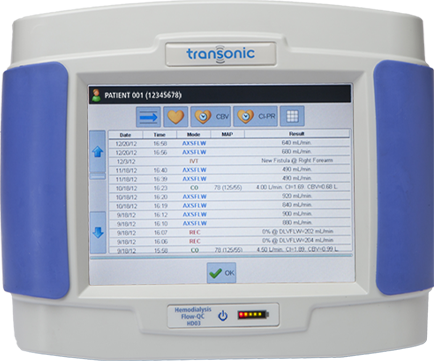More than 780,000 people in the United States live with end-stage renal disease (ESRD), according to the latest United States Renal Data System 2021 Annual Data Report, which is a 40 percent increase compared to a decade ago. And of the patients who start hemodialysis, just over 80% use a catheter for vascular access.
The rate of hemodialysis catheter utilization is increasing with the growing number of ESRD patients, combined with the ongoing impact of the COVID-19 pandemic. Kidney transplant surgeries were significantly disrupted during the spring and winter of 2020, increasing the number of patients waiting for and continuing dialysis.
Additionally, early research indicates that patients diagnosed with COVID-19 are at an increased risk of developing acute kidney injury (AKI). The research, published in JAMA Network Open in early 2021, found that acute kidney injury occurs in up to half of patients hospitalized with COVID-19. The long-term effects remain unknown.
Transonic’s HD03 Hemodialysis Monitor helps dialysis care teams combat the challenges of increased catheter use and deliver the best care to the patient by improving critical flow measurements.
In recent years, there has been a paradigm shift in best practice guidelines for vascular access care. The National Kidney Foundation’s Kidney Disease Outcomes Quality Initiative’s latest guidelines for vascular access encourage providers to take a more patient-focused approach and develop a life plan based on the individual’s specific needs and preferences.
This is critical to catheter patient management because it requires planning not just for the first vascular access, but thinking ahead to ongoing access over the patient’s life. For example, a pediatric patient with congenital kidney disease who is looking for a living donor transplant would have a different life plan than an 80-year-old patient with rapidly advancing chronic kidney disease and related health concerns.
Incorporating the patient’s life plan improves preparation for vascular access and later care of access, as well as helping prevent complications.
The HD03 Hemodialysis Device can be optimized for a catheter connection configuration if that is the treatment path that best fits the patient’s life plan.
Optimization of hemodialysis adequacy for the catheter connection configuration to measure the delivered flow and recirculation allows for adjustments to the patient’s treatment on the spot.

Learn more about how the HD03’s flow measurements can help your team improve patient treatments and outcomes with Transonic’s free webinar training series.
The Delivered Flow and Recirculation Measurements session dives into why these measurements matter and how to use the Transonic measurements to optimize your patients’ catheter-based hemodialysis.